In our hurried society, extensive cooking seems to be becoming increasingly rare. Many meals are taken out, delivered to your home, or heated in the microwave at the touch of a button.
Yet often nothing tastes better than a meal that takes time and effort into it.
Roasting is one such form of slow cooking that is more than worth its time. A warm home-made stew on a winter evening; no home delivery can beat that.

It is best to roast both vegetables and meat in a suitable roasting pan (also called a stew pan).
The roasting pan is a wide pan with often a heavy, thick bottom and a well-closing lid that prevents air from entering the pan. This pan is a perfect kitchen aid, especially for meat that has a longer cooking time.
In a roasting pan, the meat is first seared at a high temperature, often in a layer of oil or butter. The meat can then continue to simmer at a low temperature with the lid on the roasting pan.
It does take some time, but after searing the meat you don’t have to worry about it yourself. Because the meat is cooked slowly, it also retains its juiciness and flavor.
Of course, a roasting pan is not only suitable for roasting meat. Soups, vegetarian stews and various types of vegetables can also be perfectly prepared in this pan; which in most cases is also oven proof.
What types of roasting pans & casseroles are there?
And there are different types of roasting pans that each have their advantages and disadvantages. From small roasting pans, also known as cocottes, to large cast iron roasting pans; something for everyone.
The heat source in your home is very important when choosing a roasting pan. Not all materials are suitable for induction cooking, for example.
Cast iron roasting pans & casseroles

Most roasting pans are made of cast iron. Roasting pans were made from this material as early as the 17th century. Because it was a Dutch design at the time, the cast iron casserole is still known as the “Dutch oven”.
Cast iron is suitable for cooking at high temperatures. The material and thickness ensure that the heat is better distributed and retained longer, which is ideal for perfectly cooked stewing / roasting meat and vegetables.
The long cooking time preserves the juiciness of the products.
Pans made from cast iron can be quite heavy. There are manufacturers – such as the well known roasting pans from Le Creuset – who make the lid from a different material, making it easy to lift when preparing a dish to which you have to add something regularly during cooking.
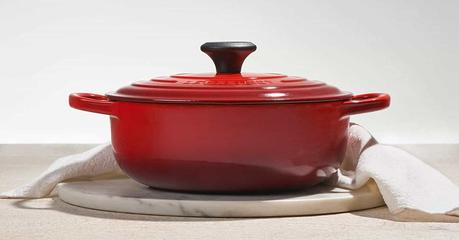
(view more images)
Because the pan is often on the fire for a long time, it is important that the lid closes properly, so that as little moisture as possible is lost. In this way, the water vapor that is created ends up back in the dish. This also benefits the taste.
Cast iron roasting pans are often quite pricey, but on the other hand also very durable. With proper maintenance, a pan made of such a material will last for years. It is important to always dry and grease the pan thoroughly, even when you put it back in the cupboard.
The fat layer prevents the pan from rusting and also ensures that food does not burn quickly when roasting. During use, the cast iron pan builds up a natural non-stick coating, because the oil penetrates the so-called “pores” of the pan.
The pans are suitable for any heat source. Because they can even go in the oven, you can prepare a variety of dishes in them.
Enamel roasting pans & casseroles

Enamel (also known as enamel) is a (glaze) layer of molten glass that is applied to pans to protect them. Such a layer prevents rust and damage and requires less maintenance than pans without an enamel coating.
Enamel pans are easier to clean, non-flammable and very durable.
Roasting pans made of enamelled cast iron do not differ much from the classic cast iron pans. The enamel coating only ensures that the pan will rust less quickly and protects the pan against the absorption of smells and flavors.
An enamel pan does not need to be greased before use and is also easier to keep clean due to the smooth surface of the glass layer. Often these pans are also a lot lighter and more handy than the cast iron pans.
For example, this one from Cuisinart is very good and affordable.
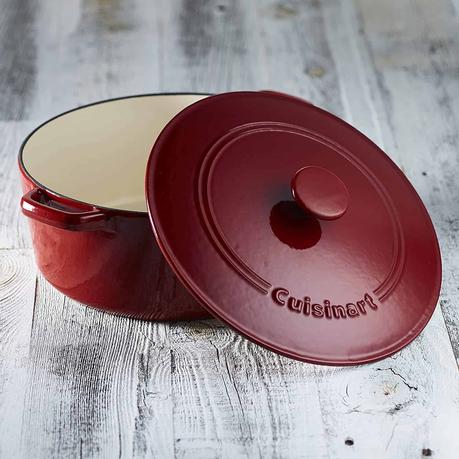
(view more images)
Sheet steel roasting pans & casseroles
Steel pans were used centuries ago. They are still very popular in the catering industry, but in most households a steel pan seems less and less common.
And that, while they are extremely durable pans. Steel is also a natural material. These pans are not only good for the environment,
but also for people themselves. This is because no chemicals can be released during cooking or roasting.
Sheet steel roasting pans are lighter than the roasting pans made of cast iron, but this has the consequence that the heat is also less well distributed.
The roasting pans made of sheet steel form a natural non-stick coating as they are used more often.
Because this layer does not come off and therefore does not mix with the food in the roasting pan, cooking in such a pan is often healthier.
The steel pan must be seasoned prior to first use, which can cause the non-stick coating to form. You do this by heating the pan quite hot with a thin layer of oil in it.
A steel roasting pan is cheaper than a cast iron pan and often lasts a lifetime. In case of rust, you can even clean the pan by sanding it with sandpaper.
The sheet steel and cast iron roasting pans are ideal for cooking on both gas and induction. Both pans are also suitable for use in the oven.
Stainless steel (SS) roasting pans & casseroles
Roasting pans made of stainless steel have the advantage that they are a bit easier to maintain than the aforementioned pans; unlike cast iron and sheet steel, they can simply be put in the dishwasher.
Because they do not or hardly rust, as the name suggests, these pans do not need to be greased. They must be degreased as well as possible, because the places where fat remains can overheat; this can cause a temperature difference and this can cause the food to burn faster.
I myself chose a stainless steel roasting pan and that is this one from Mr Rudolph because of its handy rectangular shape, which fits perfectly in my oven. In addition, it is simply handier than one made of cast iron, which is of course the pinnacle of roasting pans.
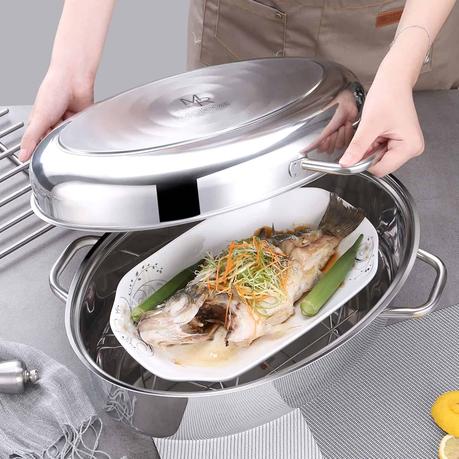
(view more images)
Roasting pans made of stainless steel are often a lot thinner and lighter than the pans made of steel and cast iron. This makes them a lot easier to handle, but retains heat less well than roasting pans made of other types of material.
Nowadays there are stainless steel pans with a thermal bottom. With such a bottom, stainless steel pans heat up evenly and can also retain the heat better.
Stainless steel pressure cooker
A variant of the stainless steel roasting pans is the pressure cooker pan. The pans can be closed air and watertight with a special lid.
The pressure fryer is intended to significantly shorten the roasting time. This is not only beneficial for the preservation of taste and vitamins, but also benefits the energy bill.
Pressure roasting pans are also ideal for “steam cooking” dishes. This is a cooking technique that ensures that as many vitamins and minerals as possible are retained.
It is therefore usually called a pressure cooker. Here are quite a few to choose from.
My favorite brand is Fissler with its patented Vitaquick system:
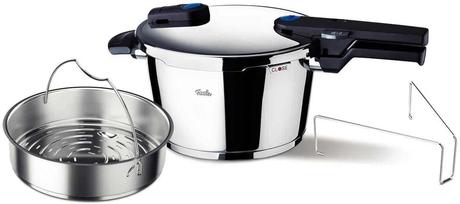
(view more images)
Copper roasting pans
In our post about the best copper pans, we also briefly talk about a great copper roasting pan, the Mauviel.
The advantage of copper is that it is a natural conductor of heat and the material spreads the heat very well throughout the pan. This means that you will be less bothered by different temperatures spread across the pan (and thus some cooked parts and other undercooked parts of your food).
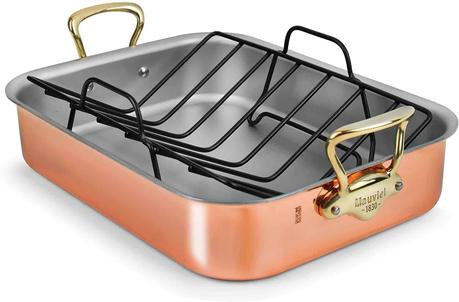
(view more images)
Tajine
At first glance, the tagine does not immediately resemble a traditional roasting pan or casserole. This North African pot, however, is extremely suitable for making stews and slow cooking meat and / or vegetables. The classic tagine often consists of a low flat dish and a cone-shaped lid.
The tagine is often made of earthenware, but nowadays they are also available in other materials, making them suitable for different heat sources. So when buying a tagine, pay attention to whether it is suitable for the heat source in your kitchen.
The classic Moroccan stew made of earthenware is really mainly suitable for use in the oven and can also be used on gas. There are also enamelled cast iron tagines, which are suitable for any heat source.
The lid of the tagine catches the cooking liquid easily due to its cone shape; the cooking liquid runs back into the dish through the sides of this lid.
In this way, the taste and aroma of the dish are preserved. When the dish is ready, it can be served in the lower flat dish itself. This often also looks very nice; especially when the pottery of the tagines is painted.
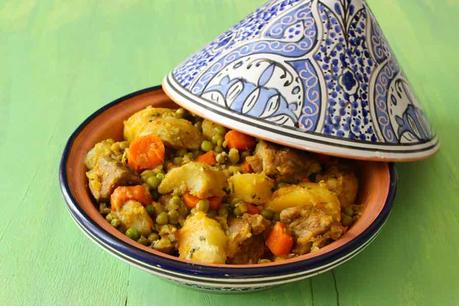
An earthenware tagine must be soaked in water before use, this prevents the tagine from breaking. Even if it is ‘dry’ in the cupboard for too long, cracks can appear in the pottery. An enamelled cast iron tagine is a bit easier to maintain, but this However, e is also a lot more expensive than the classic variant.
This Tajine from Le Creuset is a great one that will last:
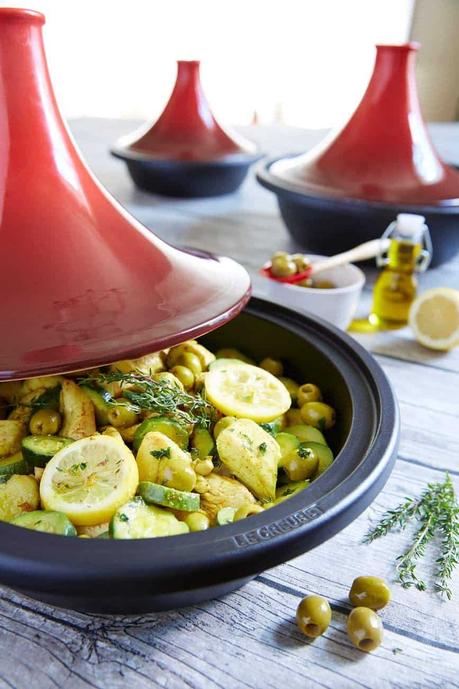
(view more images)
Small stew pots: cocottes
In French, cocotte literally means: casserole. The cocotte is a small (er) fireproof pan. However, they can withstand high temperatures well, just like the normal sized roasting pans.
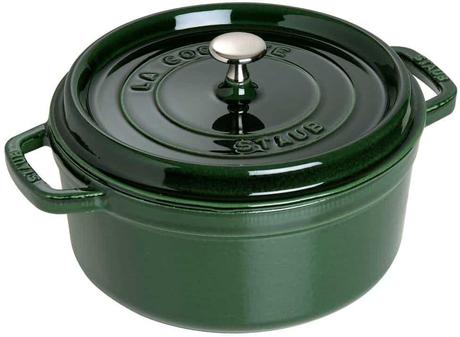
(view more images)
Because it is a small pan, the cooking time is shortened considerably. Yet it is still suitable for slow cooking; the material is always aimed at retaining heat for as long as possible.
Because the dishes are often steamed in their own cooking liquid, there is also less fat. This is a property that makes roasting a healthy (re) cooking technique in general.
I like Staub the most myself, which which you can find here.
The cocottes come in different shapes and colors. The round cocottes are well known, but there are also square and oval casseroles. The cocotte is also known for the fact that the dishes are not only prepared, but also served in the pan itself.
Because the roasting pan retains the heat for a long time, the dishes that are served in it also remain well at temperature.
